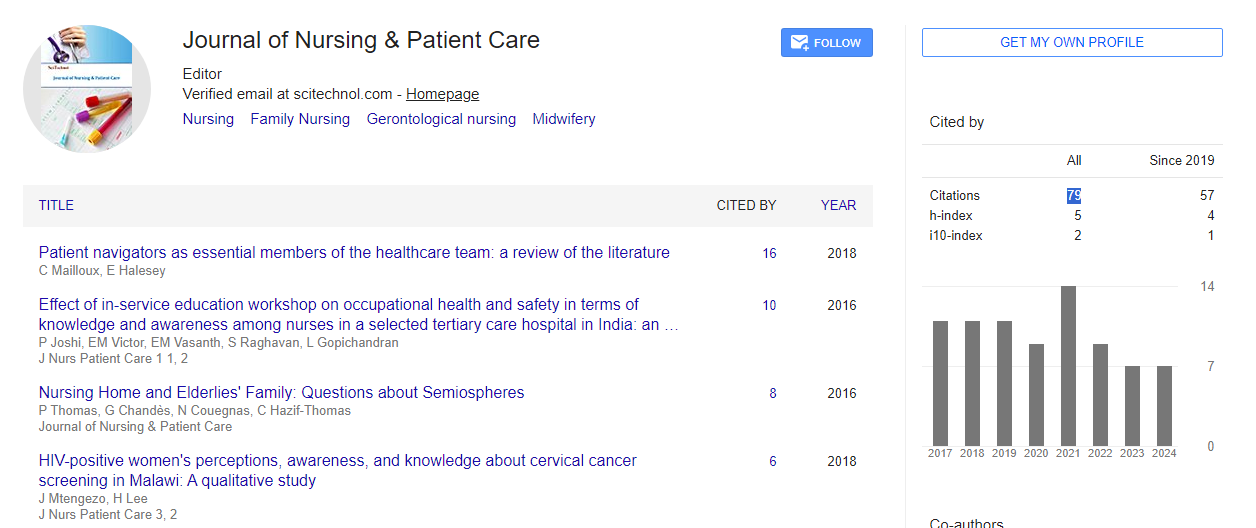Urinary incontinence: Early intervention strategies
Barbara Broome
Kent State University, USA
: J Nurs Patient Care
Abstract
Urinary incontinence is described as the involuntary loss of urine. Although not life threatening, there are social and psychological issues. Depression is noted to be a concurrent event in individuals with incontinence. The consequences of depression are that these individuals may be less likely to seek treatment for incontinence. Because of the stigma associated with depression, individuals may also delay treatment seeking for depression. The annual cost of treating those individuals that report depression are $83.1 billion. The cost of urinary incontinence and depression exceed $100 billion annually. Early recognition and treatment can have a positive impact on outcomes for the individual and financial cost. Previous research by Broome (2001, 1999) also noted the relationship between depression and incontinence. Broome (1999) also examined the effectiveness of pelvic muscle exercises (PME) as an intervention. Findings support the effectiveness of PME, however; it is not clear why some individuals are successful and while others are not. Self-efficacy has been determined to be a mediator of success. The Broome Pelvic Muscle Self-Efficacy Scale (PMSES) is a way to determine the potential for success and has been used in national and international studies.
 Spanish
Spanish  Chinese
Chinese  Russian
Russian  German
German  French
French  Japanese
Japanese  Portuguese
Portuguese  Hindi
Hindi 